Trimbow® pMDI
Your doctor, nurse or pharmacist has prescribed you a Trimbow pMDI to help you to manage your condition.
‘pMDI’ stands for ‘pressurised metered dose inhaler’, and your prescribed inhaler should look like one of the images here.
Taking your inhaler as prescribed can help to manage your symptoms, and this page contains information to help you with this.
Remember, should you need additional advice regarding your asthma or COPD, please speak to your doctor, nurse or pharmacist.
For resources for your condition, please click the relevant button in line with your prescription.
- Asthma (Trimbow pMDI 87/5/9 and Trimbow pMDI 172/5/9)
- COPD (Trimbow pMDI 87/5/9 only)
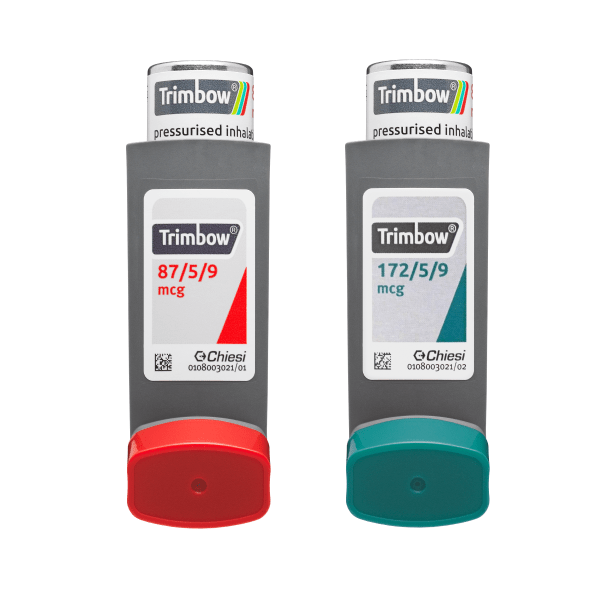
How to use Trimbow pMDI
Asthma
How to use How to use with a spacerCOPD
How to use How to use with a spacerTrimbow pMDI User Guides
Asthma
Trimbow pMDI 87/5/9 Asthma User Guide Trimbow pMDI 172/5/9 Asthma User GuideCOPD
Trimbow pMDI 87/5/9 COPD User GuideTrimbow pMDI Patient Information Leaflet
Asthma
Trimbow pMDI 87/5/9 Trimbow pMDI 172/5/9COPD
Trimbow pMDI 87/5/9
Firstly, it’s important to read all of the Patient Information Leaflet provided with your inhaler carefully before you start using this medicine because it contains important information for you.
You can download the Patient Information Leaflet for Trimbow pMDI 87/5/9 or Trimbow pMDI 172/5/9 on these links.
Trimbow pMDI should be taken as prescribed – 2 puffs, twice a day.
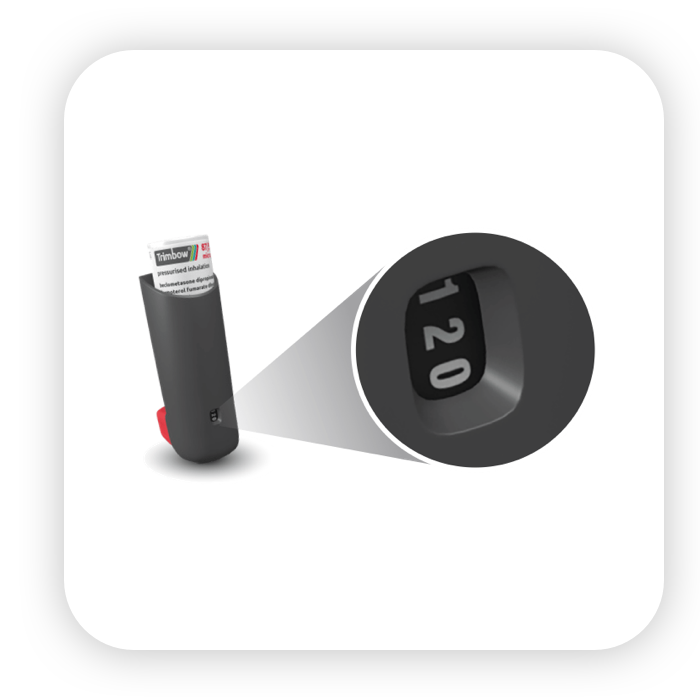
First use
Before using your inhaler for the first time you should test it to make sure it is working properly:
- Check that the dose counter reads ‘121’
- Remove the protective cap from the mouthpiece
- Hold your inhaler upright with the mouthpiece at the bottom and direct the mouthpiece away from you
- Firmly press the pressurised container to release 1 puff into the air
- You should see a ‘mist’ come from your inhaler
- Check the dose counter. The counter should now read ‘120’
Once you are satisfied that it is working correctly, you can start using your inhaler.1,2
Everyday use
To use your Trimbow inhaler, follow the 5 steps shown here. Don’t rush yourself, especially during steps 2 to 5.
-
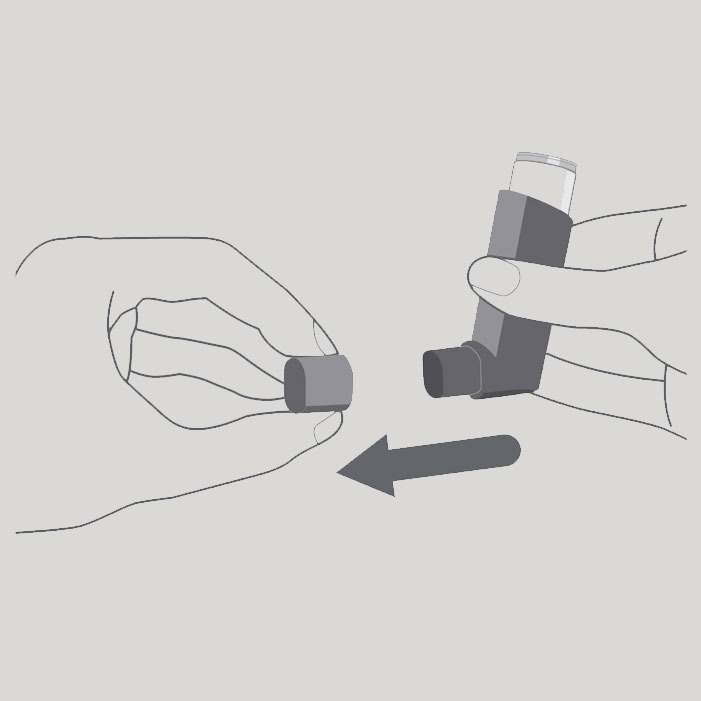
Step 1
To begin, stand or sit in a comfortable upright position.
Remove the protective cap from the inhaler mouthpiece and check that it is clean and free from dust, dirt, or any other foreign objects.
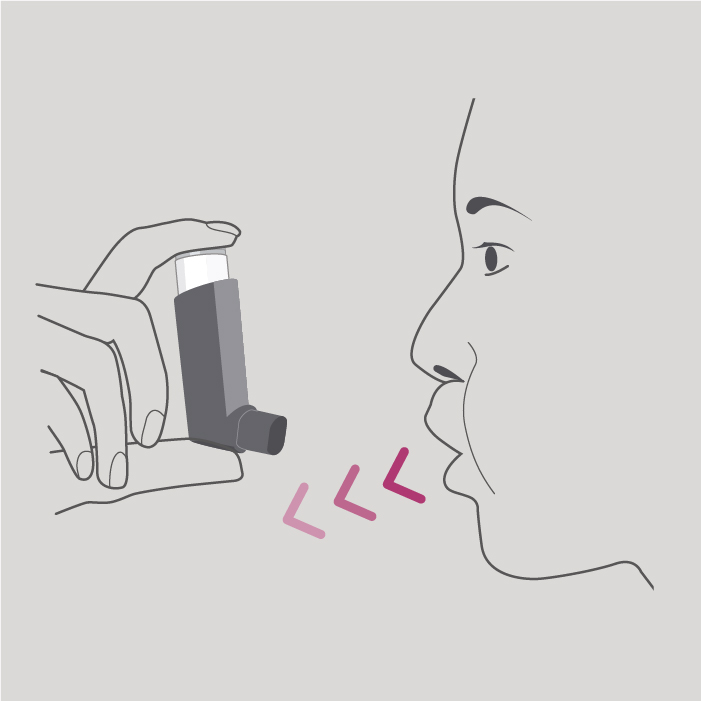
Step 2
Breathe out, slowly and deeply.
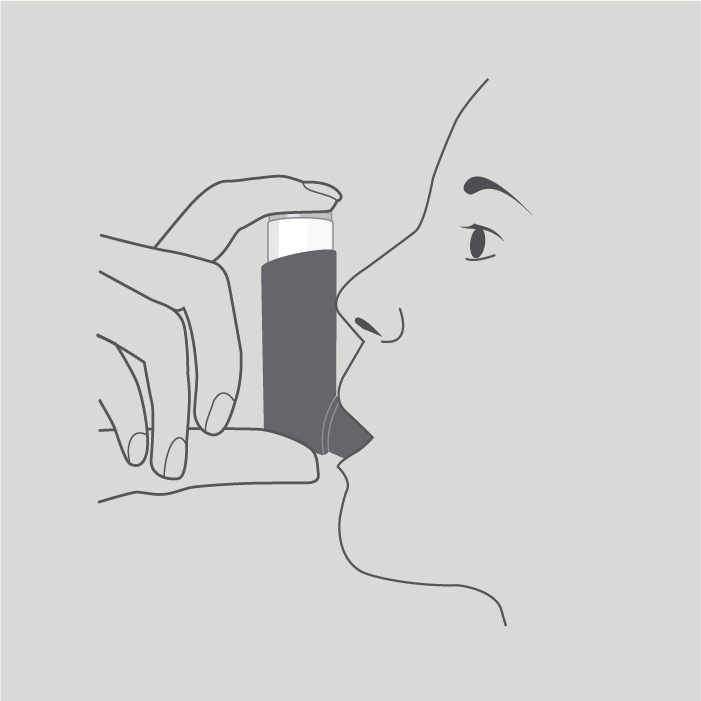
Step 3
Hold the inhaler upright.
Place the mouthpiece between your front teeth without biting it, closing your lips tightly around the mouthpiece to form an effective seal.
Ensure your tongue remains flat and does not obstruct the mouthpiece.
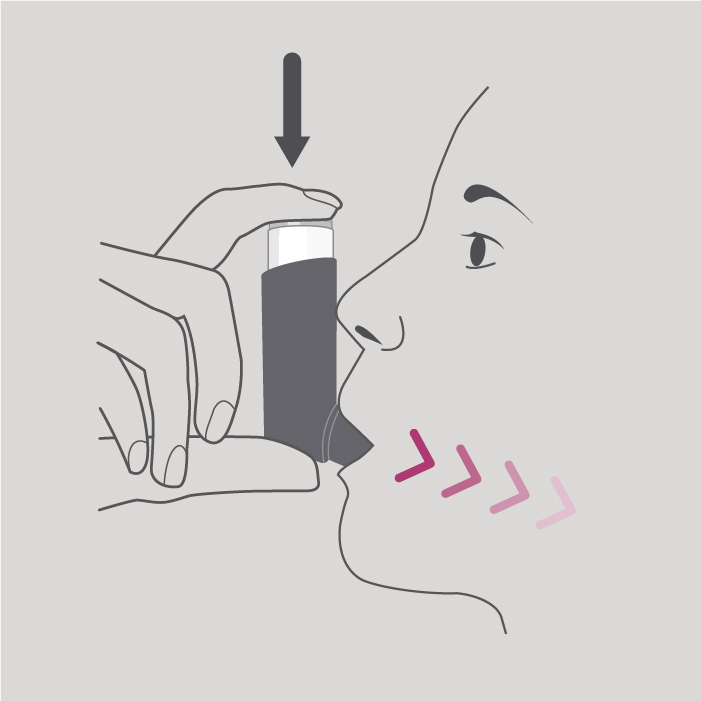
Step 4
Whilst breathing in slowly and deeply through your mouth, press down firmly on the pressurised container to release one puff.
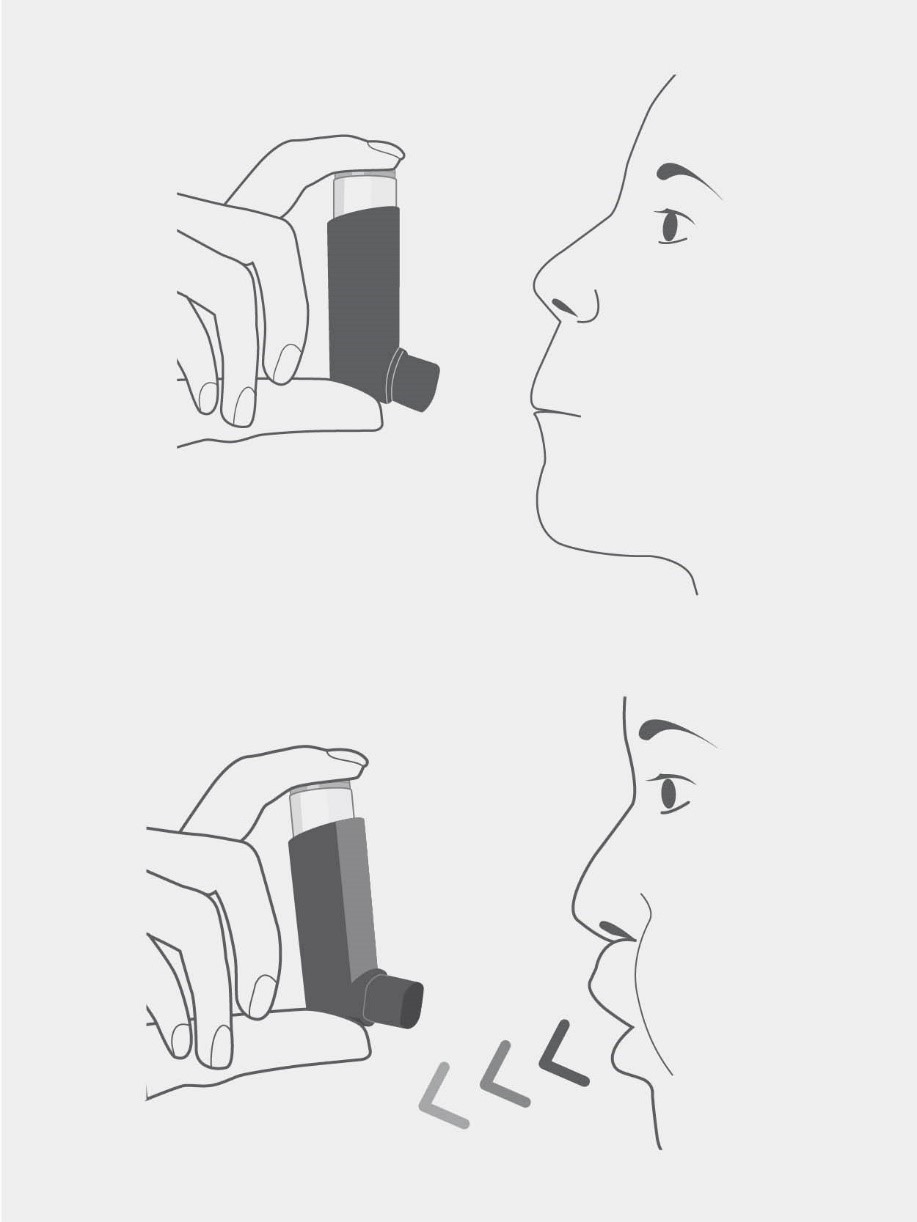
Step 5
Hold your breath for as long as possible, or as long as is comfortable.Finally, remove the inhaler from your mouth and breathe out slowly. Do not breathe out into the inhaler.
To take a second dose
Keep your inhaler in the upright position for about half a minute, then repeat steps 2 to 5.
Take your time. IMPORTANT: Do not repeat steps 2 to 5 too quickly.
See the information below about what to do after you have used your inhaler.
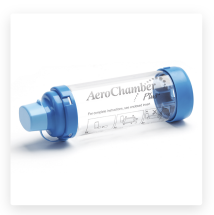
Using a spacer
Your doctor, nurse or pharmacist may have prescribed you a spacer, called an AeroChamber Plus® to use with your inhaler.
Your spacer may look like a long chamber with a mouthpiece at one end and a hole at the other where it attaches to your inhaler.
Follow the next 7 steps to use your Trimbow inhaler with a spacer. Don’t forget to refer to the information leaflet that comes with the AeroChamber Plus® spacer, or speak to your doctor, nurse or pharmacist for more information or help.
How to use Trimbow with a spacer
Use the link below to see the steps to use your inhaler with a spacer. Don’t forget to refer to the information leaflet that comes with the AeroChamber Plus® spacer, or speak to your doctor, nurse or pharmacist for more information or help.
-
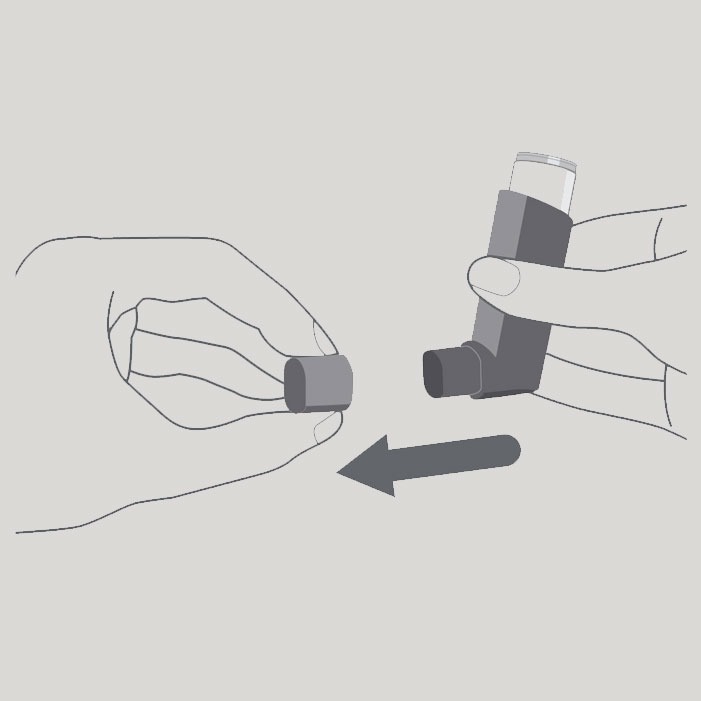
Step 1
To begin, stand or sit in a comfortable upright position.
Remove the protective cap from the inhaler mouthpiece.
Check that it is clean and free from dust, dirt, or any other foreign objects.
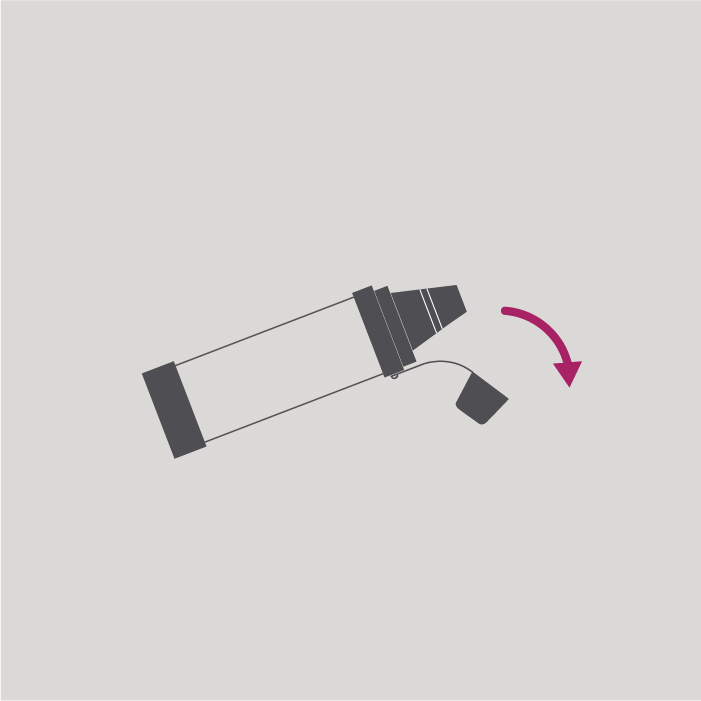
Step 2
Remove the protective cap from the spacer mouthpiece and check there is nothing inside it.
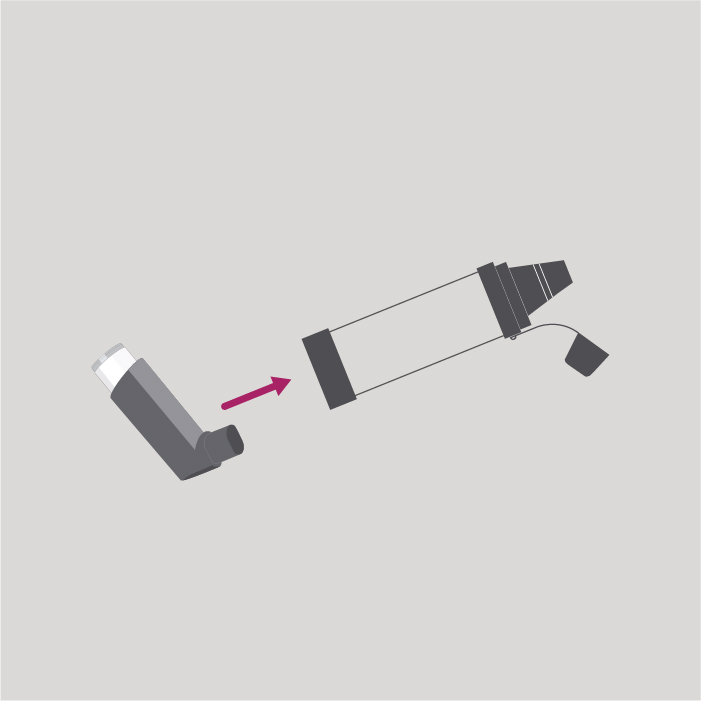
Step 3
Insert the mouthpiece of the inhaler into the inhaler port of the spacer.
Make sure the inhaler mouthpiece points straight towards the spacer mouthpiece.
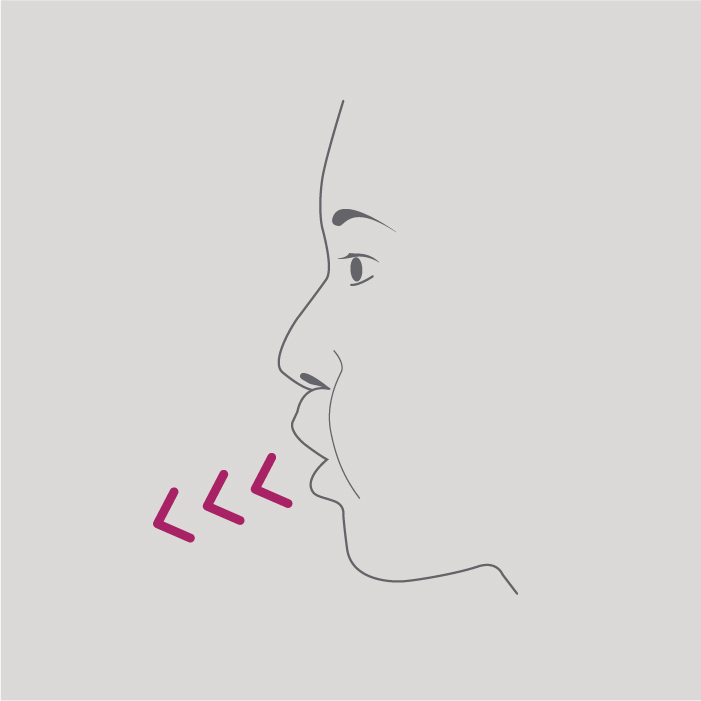
Step 4
Breathe out, slowly and deeply.
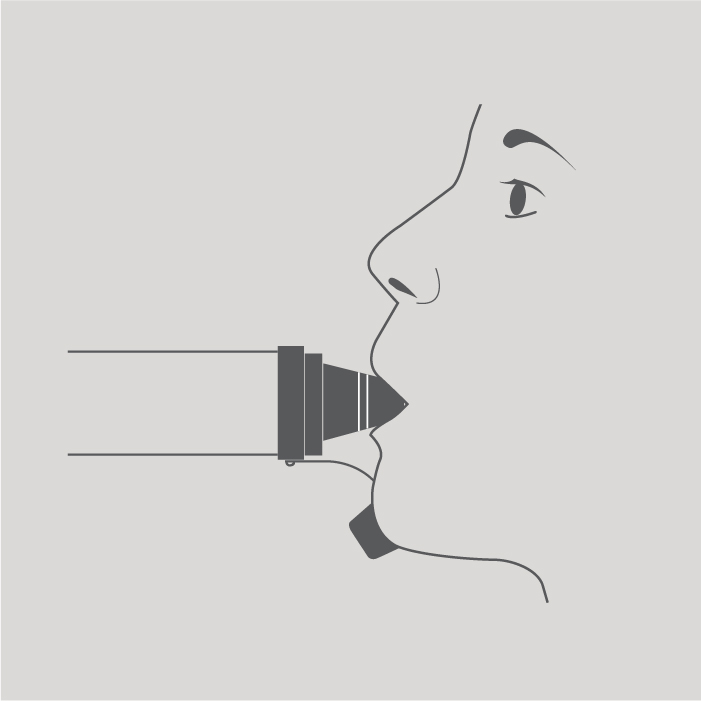
Step 5
Place the mouthpiece of the spacer in your mouth between your front teeth, closing your lips tightly around the mouthpiece for an effective seal.
Ensure your tongue remains flat and does not obstruct the mouthpiece.
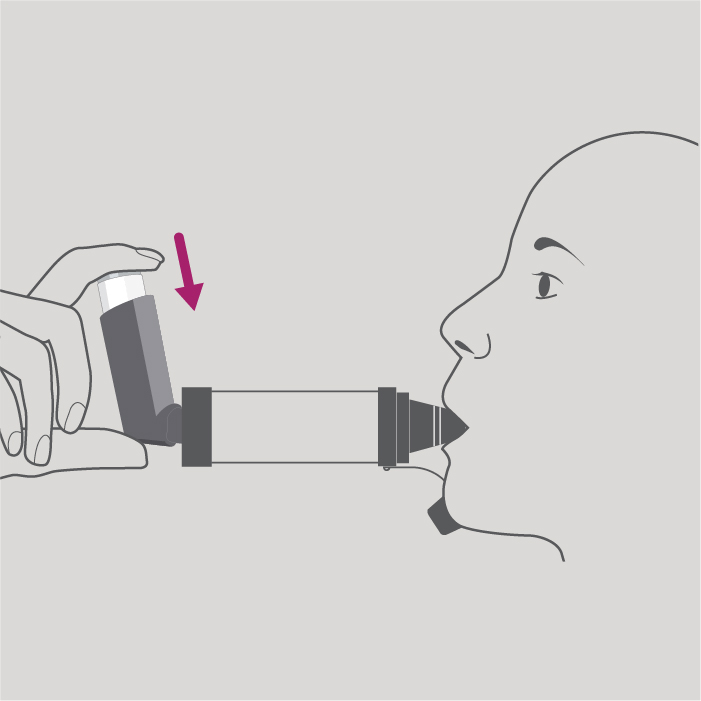
Step 6
Whilst breathing in slowly and deeply through your mouth, press down firmly on the pressurised canister to release 1 puff.
Once a full breath has been taken, hold for 5–10 seconds, or for as long as is comfortable.
If you are unable to breathe slowly, you can simply breathe in and out 2–3 times as normal (through your mouth) to obtain the medication.
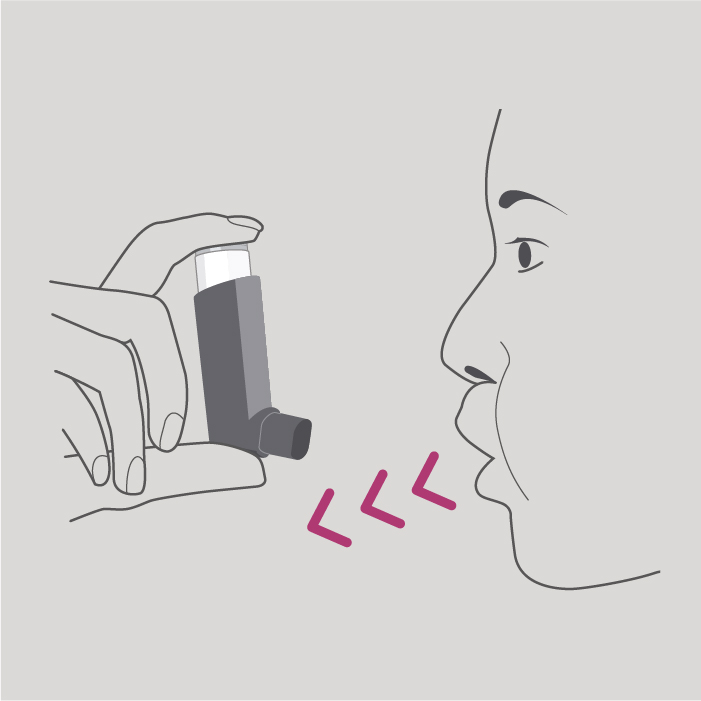
Step 7
Remove the spacer and Trimbow inhaler from your mouth and breathe out slowly.
Check that the dose counter has moved down by 1, keep your inhaler in the upright position for about half a minute and then repeat the steps to take your second puff.
After use
After use, replace the protective cap and check the dose counter.
The dose counter should decrease by 1 with every puff.
To lower the risk of a fungal infection in your mouth and throat, rinse your mouth or gargle with water, without swallowing, or brush your teeth each time after you use your inhaler.
Make sure you clean your Trimbow pMDI inhaler every week as described in the Patient Information Leaflet within the pack.
Replacements and disposal
You should get a replacement when the dose counter shows the number ‘20’. Stop using the inhaler when the dose counter shows ‘0’. This is because any medicine left in the inhaler may not be enough to give you a full dose.
Medicines should not be disposed of via waste water or household waste. Ask your pharmacist how to dispose of medicines no longer required. These measures will help to protect the environment.
In line with your prescription, select the Trimbow pMDI for asthma or Trimbow pMDI for COPD tab for specific resources for your condition.

Trimbow pMDI for asthma
Trimbow pMDI contains three medicines in one inhaler:
- beclometasone
- formoterol
- glycopyrronium
Beclometasone belongs to a group of medicines called corticosteroids, which help to reduce the swelling and irritation in the lungs.
Trimbow pMDI also contains formoterol, a long-acting beta-agonist, and glycopyrronium, a long-acting muscarinic antagonist. These two medicines relax the muscles in the airways, helping to open them wider and allowing you to breathe more easily.
It is important that you know how to use your inhaler properly.
Trimbow pMDI is used as a maintenance therapy, which means you need to take it every day as prescribed:
- 2 puffs in the morning
- 2 puffs in the evening
It is very important for you to use Trimbow pMDI regularly, even if you feel well, as this will help control your asthma symptoms.
It’s important to use your inhaler correctly to get the full benefit from your medicine, take a look at the resources below to help with this, and check with your doctor, nurse, or pharmacist if you are not sure how to take your medicine correctly.
Always use this medicine exactly as your doctor or pharmacist has told you. Check with them if you are not sure how to take your medicine correctly. They will advise you on how your Trimbow pMDI should be taken in combination with any other medication and provide you with an asthma action plan to help you manage your respiratory symptoms.
How to use Trimbow pMDI
How to use Trimbow pMDI
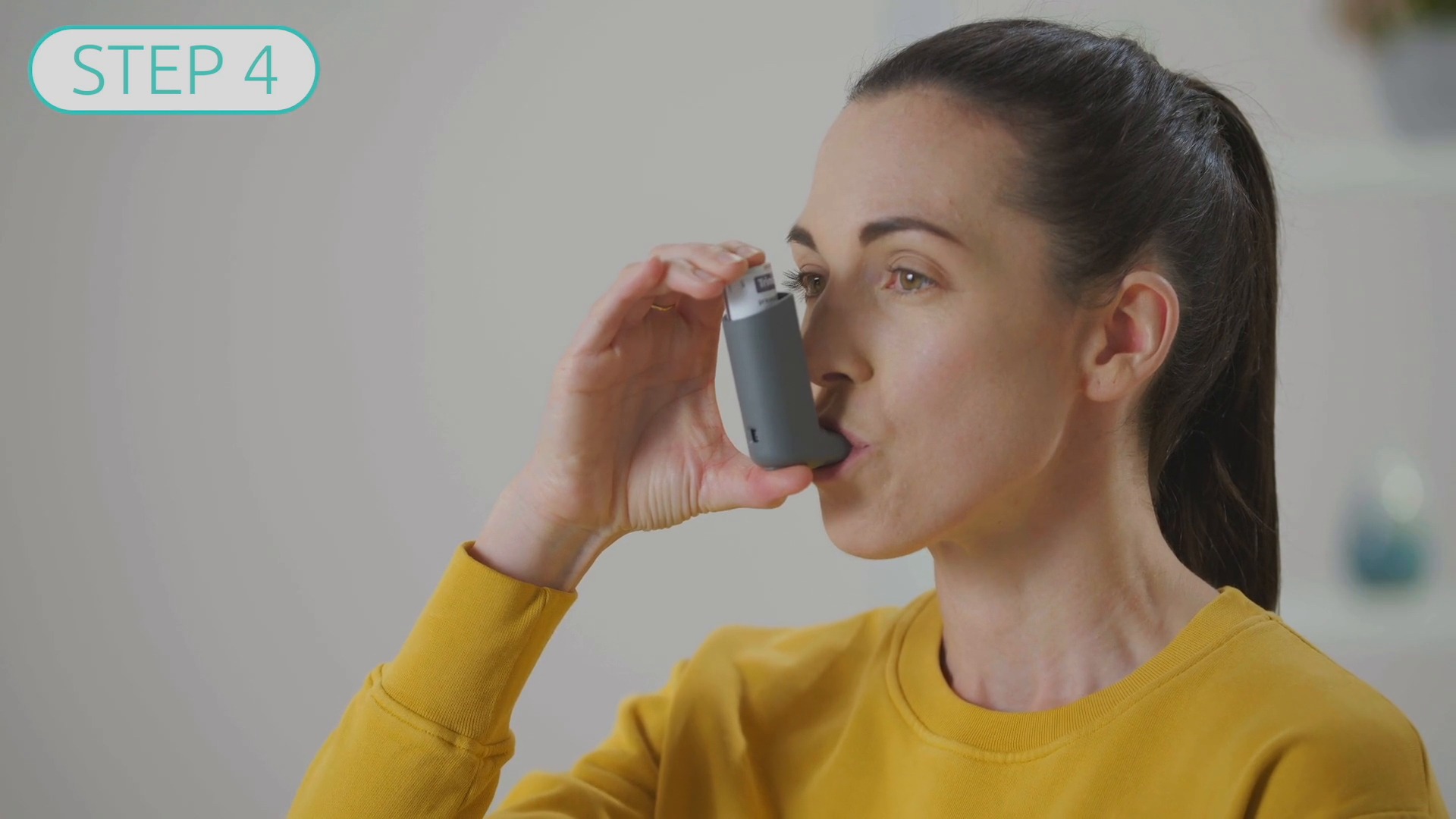
How to use Trimbow pMDI with a spacer
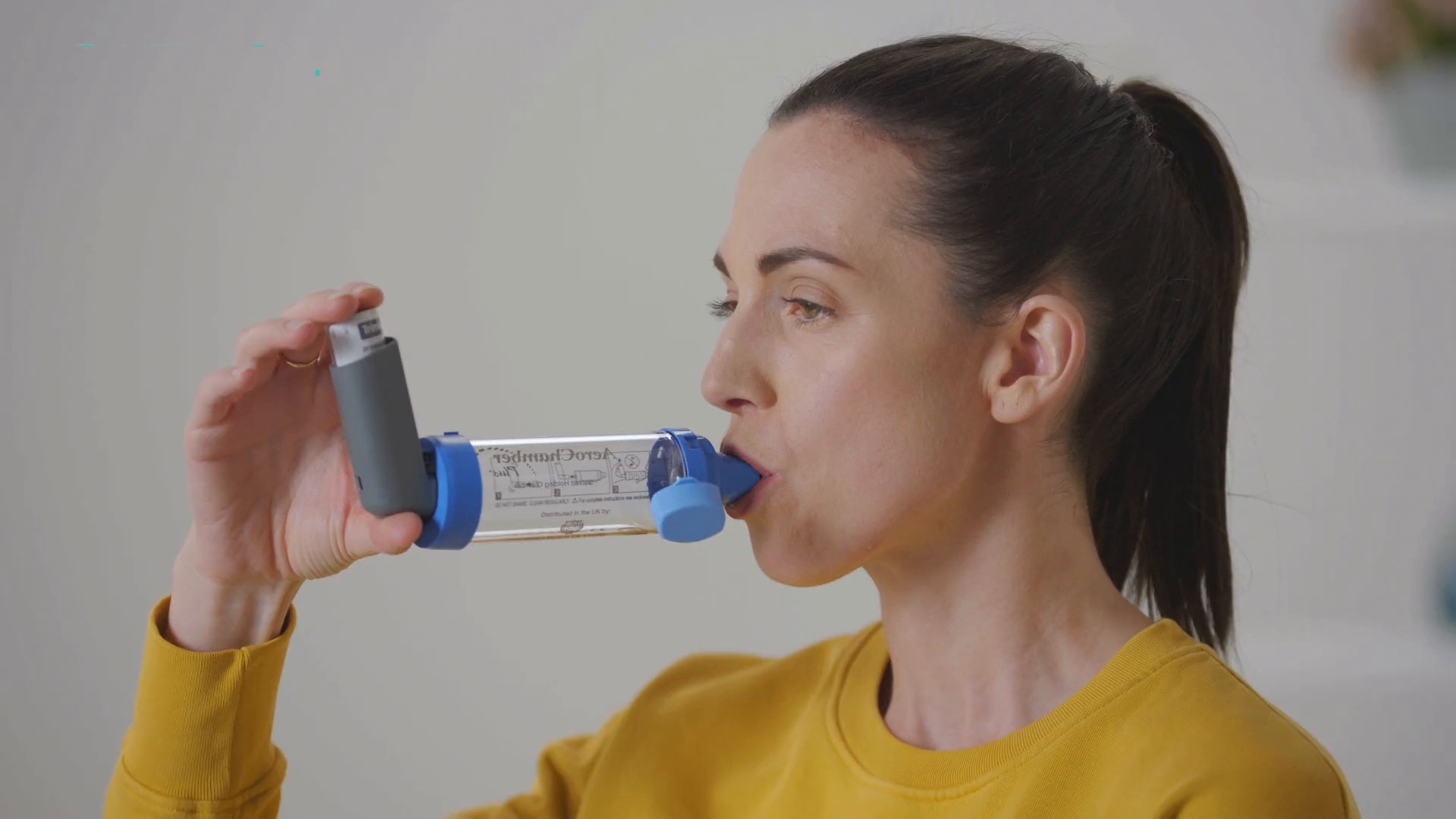

Trimbow pMDI for COPD
Trimbow pMDI contains three medicines in one inhaler:
- beclometasone
- formoterol
- glycopyrronium
Beclometasone belongs to a group of medicines called corticosteroids, which help to reduce the swelling and irritation in the lungs.
Trimbow pMDI also contains formoterol, a long-acting beta-agonist, and glycopyrronium, a long-acting muscarinic antagonist. These two medicines relax the muscles in the airways, helping to open them wider and allowing you to breathe more easily.
It is important that you know how to use your inhaler properly.
When taken regularly, your Trimbow pMDI inhaler can help to manage symptoms such as shortness of breath, wheezing and cough in adult patients with COPD.
Trimbow pMDI can reduce exacerbations, sometimes known as ‘flare-ups’ of COPD symptoms.
Trimbow pMDI is used as a maintenance therapy, which means you need to take it every day as prescribed:
- 2 puffs in the morning
- 2 puffs in the evening
It is very important for you to use Trimbow pMDI regularly, even if you feel well, as this will help control your COPD symptoms.
It’s important to use your inhaler correctly to get the full benefit from your medicine, take a look at the resources below to help with this, and check with your doctor, nurse, or pharmacist if you are not sure how to take your medicine correctly.
Always use this medicine exactly as your doctor or pharmacist has told you. Check with them if you are not sure how to take your medicine correctly. They will advise you on how your Trimbow pMDI should be taken in combination with any other medication and provide you with an action plan to help you manage your respiratory symptoms.
How to use Trimbow pMDI
How to use Trimbow pMDI

How to use Trimbow pMDI with a spacer
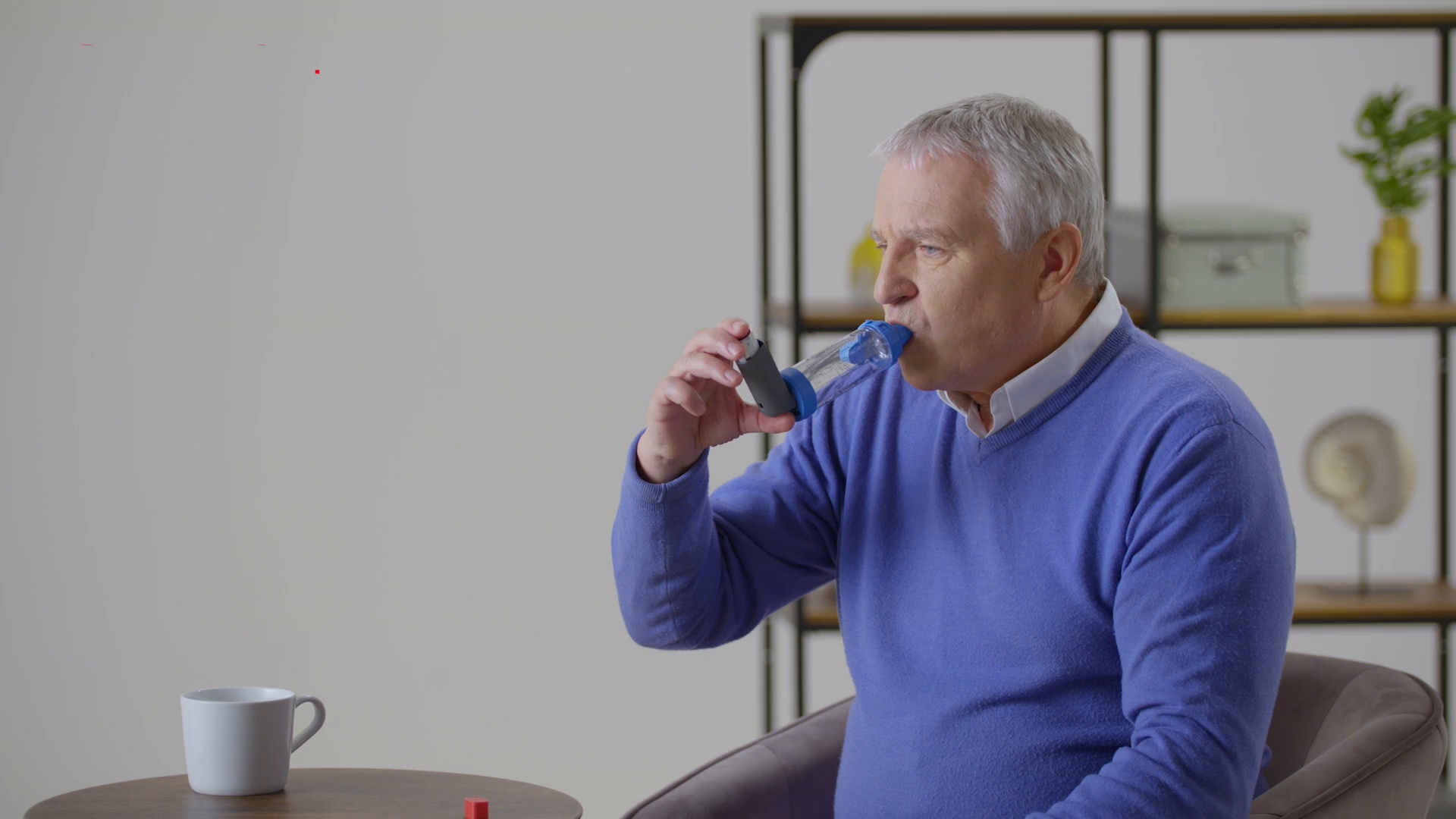
Frequently Asked Questions
Using your inhaler
-
Always use this medicine exactly as your doctor, nurse or pharmacist has instructed.
Check with your doctor, nurse or pharmacist if you are not sure about how to take Trimbow pMDI correctly.
Your doctor, nurse or pharmacist may also provide you with an action plan to help you manage your symptoms.
You should take your inhaler as prescribed – 2 puffs twice a day.
-
When you don’t have any symptoms or you feel like you don’t need it, it can be easy to forget to use your inhaler. You should remember that regular use of your inhaler is important to keep you feeling this way.
You should use your inhaler as prescribed. 2 puffs twice a day, every day, even when you are feeling well.
-
Step-by-step guides on how to use your inhaler are available below.
Asthma
Trimbow pMDI 87/5/9 Asthma user guide
Trimbow pMDI 172/5/9 Asthma user guide
COPD
-
Spacers are empty tubes that are usually made from plastic. They slot onto the mouthpiece of your inhaler on one end, and you use a mouthpiece or mask on the spacer at the other end. Spacers can make it easier to take your medicine and can help to get more medication straight into your lungs.3,4
Your doctor, nurse or pharmacist may have prescribed a spacer, called the AeroChamber Plus® to be used with your inhaler. Your spacer may look like a long chamber with a mouthpiece at one end and a hole at the other where it attaches to your inhaler. See step-by-step instructions on how to use your inhaler with a spacer.
It is important that you read the package leaflet which is supplied with your AeroChamber Plus® spacer device, and that you follow the instructions on how to use and how to clean it, carefully.
Looking after your inhaler
-
Once collected from the pharmacist, you can keep your inhaler at room temperature (not above 25°C) for:
- A maximum of 4 months for Trimbow pMDI 87/5/9
- A maximum of 3 months for Trimbow pMDI 172/5/9
Follow these instructions to store your inhaler correctly:
- Keep this medicine out of the sight and reach of children
- Do not use this medicine after the expiry date which is stated on the label and carton after ‘EXP’. The expiry date refers to the last day of that month
- You do not need to store in a refrigerator
- Do not expose the canister to temperatures higher than 50°C
- Do not freeze
- Do not pierce the pressurised container.
-
Before using your inhaler for the first time the dose counter should read ‘121’.
Your inhaler should last you 30 days if you are taking 2 puffs, twice a day, every day.
You should get a replacement when the dose counter shows the number 20. Stop using the inhaler when the dose counter shows 0, as any medicine left in the inhaler may not be enough to give you a full dose.
-
It is important to clean your inhaler at least once a week to stop it blocking up.
- Do not remove the pressurised container from the inhaler and do not use water or other liquids to clean your inhaler
- Remove the protective cap from the mouthpiece by pulling it away from your inhaler
- Wipe inside and outside of the mouthpiece and the inhaler with a clean, dry cloth or tissue
- Replace the mouthpiece cap
If you are using a spacer device, you should read the leaflet that came with it for any instructions on cleaning. Instructions on how to clean your inhaler are also found in the Patient Information Leaflet included in the device packaging.
Side effects and other medications
-
Like all medicines, Trimbow pMDI may cause side effects, although not everybody gets them. If you do get any side effects, talk to your doctor, pharmacist or nurse. This includes any possible side effects not listed in the Patient Information Leaflet.
You can also report side effects directly via the Yellow Card Scheme. By reporting side effects you help provide more information on the safety of this medicine.
-
Your doctor, nurse or pharmacist can advise you about using other prescribed medications. You should also check with your pharmacist before taking medicines bought over the counter.
You must tell your doctor, nurse or pharmacist about any medication you may be taking, including herbal remedies.
It can be isolating, suffering from a condition that may limit your ability to get out and about. There is a lot of information available online, but it’s important to go to a reliable source. The suggested resources listed below can offer you further support on the various aspects of living with COPD or asthma.
NHS
Helpline: 111 (non-emergency)
NHS asthma information
NHS COPD information
NHS Smokefree
Asthma + Lung UK
Helpline: 0300 222 5800 (non-emergency)
Explore support for asthma
Explore support for COPD
References
-
- Trimbow pMDI 87/5/9 Patient Information Leaflet. Available at: https://www.medicines.org.uk/emc/files/pil.761.pdf
- Trimbow pMDI 172/5/9 Patient Information Leaflet. Available at: https://www.medicines.org.uk/emc/files/pil.13816.pdf
- Spacers. Asthma + Lung UK. Available at: https://www.asthma.org.uk/symptoms-tests-treatments/treatments/spacers
- Treating breathlessness. Asthma + Lung UK. Available at: https://www.blf.org.uk/support-for-you/breathlessness/treatment
The information provided here is not intended to replace the advice of your healthcare professional. If you have any questions about your medication, please speak to your doctor, nurse or pharmacist.
AeroChamber Plus® is a registered trademark of Trudell Medical International.
If you have not been prescribed Trimbow pMDI and are looking for information on another Chiesi respiratory product please visit our homepage.
Reporting of side effects: If you get any side effects, talk to your doctor, pharmacist or nurse. This includes any possible side effects not listed in the package leaflet. You can also report side effects directly via the Yellow Card Scheme at: https://yellowcard.mhra.gov.uk. By reporting side effects you can help provide more information on the safety of this medicine.

